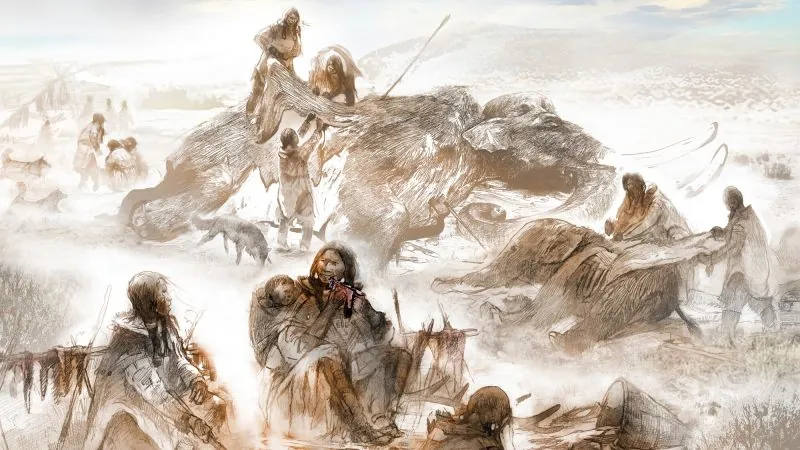
Did Ancient Americans Really Feast on Mammoth Steak? Shocking New Study Reveals Their Dietary Secrets!
2024-12-06
Author: Chun
Introduction
A groundbreaking new study sheds light on the diet of the Clovis people, the ancient ancestors of Native Americans, revealing that during the last Ice Age, these early inhabitants of North America primarily feasted on mammoths and other large game. This fascinating discovery challenges previous assumptions about their eating habits and provides a more vivid picture of their daily lives.
Research Findings
The research focused on the remains of an 18-month-old boy, unearthed in 1968 near Wilsall, Montana, dating back approximately 13,000 years. Utilizing advanced stable isotope analysis, a team of scientists from various universities in the United States and Canada examined the chemical signatures in the boy's remains. Given that he was still nursing, researchers could infer his mother’s dietary choices, leading to the astonishing conclusion that mammoths constituted around 35% of her diet. In addition to mammoths, her meals included elk, bison, and even camels, indicating a heavy reliance on large game. Small mammals and plant materials, on the other hand, were virtually absent from her diet.
Clovis People's Lifestyle
Co-lead author James Chatters from McMaster University expressed excitement about how this study makes the Clovis people feel more relatable. "It’s gone from being artifacts in the dirt to a group of people I can imagine," he stated. Their lifestyle likely involved extensive travel, following the migratory patterns of mammoths, which explains how the Clovis people spread across North America—and eventually into South America—within just a few hundred years.
Debate Over Diet
Debate has long surrounded the Clovis diet, with some experts proposing that they hunted large game while others argued for a more varied diet that included smaller animals and plant life. Gary Haynes, an emeritus professor at the University of Nevada and a veteran researcher of Pleistocene animals, commended the new study for providing "direct rather than circumstantial evidence" of the critical role mammoths played in the Clovis diet.
Stable Isotope Analysis
The innovative stable isotope analysis used in this research not only identifies the mother's specific dietary proteins but also reveals unexpected parallels to the diet of a scimitar cat—a carnivore primarily targeting mammoths. This comparison offers new insight into the survival strategies of both ancient humans and their predatory counterparts.
Impact of Hunting on Mammoths
Shane Doyle, executive director of Yellowstone Peoples, remarked on the remarkable resilience and skill of the Clovis community, highlighting their survival tactics in a challenging climate. However, this hunting prowess may have had dire consequences; some experts suggest that human hunting contributed significantly to the extinction of mammoths. Haynes noted that many of the largest known mammoth sites in the United States and Central Europe primarily contain remains of younger animals, the easiest targets, hinting that overhunting by humans may have severely impacted mammoth populations during crucial climate shifts.
Conclusion
This groundbreaking study, published in the journal *Science Advances*, invites us to reconsider the complex relationship between early humans and their environment. As we delve deeper into the past, each discovery recontextualizes our understanding of ancient civilizations and their interactions with the majestic megafauna that once roamed the Earth. What other secrets lie buried in the sands of time?



 Brasil (PT)
Brasil (PT)
 Canada (EN)
Canada (EN)
 Chile (ES)
Chile (ES)
 Česko (CS)
Česko (CS)
 대한민국 (KO)
대한민국 (KO)
 España (ES)
España (ES)
 France (FR)
France (FR)
 Hong Kong (EN)
Hong Kong (EN)
 Italia (IT)
Italia (IT)
 日本 (JA)
日本 (JA)
 Magyarország (HU)
Magyarország (HU)
 Norge (NO)
Norge (NO)
 Polska (PL)
Polska (PL)
 Schweiz (DE)
Schweiz (DE)
 Singapore (EN)
Singapore (EN)
 Sverige (SV)
Sverige (SV)
 Suomi (FI)
Suomi (FI)
 Türkiye (TR)
Türkiye (TR)
 الإمارات العربية المتحدة (AR)
الإمارات العربية المتحدة (AR)